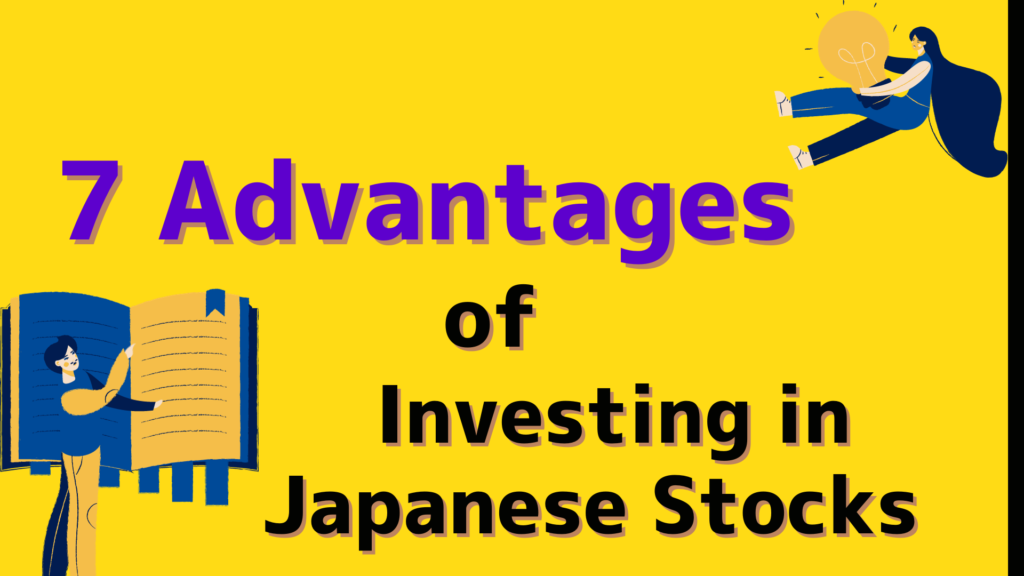
Hello, I’m Torkey, and I invest in Japanese stocks as a hobby.
This article is created with reference to the book of Mr. Long-Term Stock Investor(長期株式投資), a Japanese high-dividend stock investor.
Despite being an ordinary salaryman, Mr. Long-Term Stock Investor has surpassed a total asset value of 100 million yen in 14 years of high-dividend stock investment.
In 2022, he earned an annual dividend income of 2.82 million yen, making him an impressive individual.
Mr. Long-Term Stock Investor’s investment approach involves identifying undervalued stocks and gradually increasing holdings, a strategy similar to the renowned investor Warren Buffett.
In other words, Mr. Long-Term Stock Investor can be considered the Japanese counterpart of Warren Buffett.
In this article, we will be introducing the ’10 Commandments for Not Losing in High Dividend Stock Investment’ and the ‘Premium Stocks to Hold Until Death,’ drawing inspiration from Mr. Long-Term Stock Investor’s book.
Packed with valuable insights for those interested in Japanese high-dividend stock investment, be sure to read until the end for essential information.
- 【The 10 Commandments for Not Losing】
- ①Buy industry-leading companies
- ②Buy companies with a low P/E ratio
- ③Buy companies with a low P/B ratio
- ④Buy companies with a high ROA
- ⑤Buy companies with a high dividend yield
- ⑥Buy companies with a progressive dividend policy
- ⑦Buy companies with a high profit margin
- ⑧Diversify your investments
- ⑨Maintain a cash reserve and gradually make purchases
- ⑩Buy during market crashes when everyone else despairs
- 【The 17 Stocks to Hold Until Death Classified by Sector Rotation】
- 【The 29 Stocks I Might Want to Hold Until Death Classified by Sector Rotation】
- 【7 advantages of Investing in Japanese Stocks】
- 【Summary】
【The 10 Commandments for Not Losing】

Based on 18 years of investment experience, Mr. Long-Term Stock Investor has outlined the ’10 Commandments for Not Losing in Stock Investment.’
This section, which I picked up immediately after finishing the book, encapsulates the essence of the entire work.
It’s a crucial aspect worth noting, so let’s jot it down and keep it in a visible place for daily reference.
If you want to achieve success in high-dividend stock investment, here are the 10 commandments that you must absolutely adhere to.
We will go through each one, providing explanations along the way. Let’s explore and consider implementing these strategies together for reference.
①Buy industry-leading companies
If you are aiming for long-term holding, choose companies that provide stable profits and are industry leaders or have a unique position in the market.
〈Industry leader〉
A company that, in comparison with its peers in the same industry, has the highest absolute value of net profit (bottom-line profit).
The company that earns the most in its sector
〈Industry unique〉
A company that holds a significant market share in a specific field and often exhibits a high operating profit margin.
The ranking within the industry tends to change infrequently, and it is not uncommon for the No. 1 company from ten years ago to still hold the top position today.
In other words, the high likelihood of remaining No. 1 in the future indicates a strong probability of continued stable profits.
②Buy companies with a low P/E ratio
Let’s choose companies with a low P/E ratio (Price-to-Earnings ratio).
A P/E ratio of around 15 is considered fair, with values above 20 indicating overvaluation and those below 10 considered undervalued.
Establishing a rule such as ‘do not buy when the P/E ratio is above 20’ can prevent critical mistakes.
It’s important to note that the average P/E ratio varies by sector.
In high-tech sectors, a higher P/E ratio is acceptable, while sectors like steel or banking are considered reasonable even with lower P/E ratios.
Therefore, it’s advisable to check the ‘average P/E ratio’ for the sector to which the stock you’re considering belongs.
③Buy companies with a low P/B ratio
Let’s buy in a market downturn with a low PBR (Price-to-Book Ratio).
With a baseline of 1, a PBR above 1 is considered expensive, while below 1 is considered cheap.
However, this metric may not be as critical when evaluating individual companies.
This is because well-performing companies with good capital efficiency, which are highly regarded by the market, often have a PBR exceeding 1.
Instead, PBR can be utilized as a gauge to determine the market bottom during a significant downturn.
Even during once-in-a-century events like the Lehman Shock or the recent COVID-19 shock, the Nikkei Average’s PBR did not fall below 0.8%.
In other words, even in an extraordinary market collapse, a Nikkei Average PBR of 0.8% can roughly indicate the bottom range of the market downturn.
④Buy companies with a high ROA
Let’s choose companies with high ROA (Return on Assets), indicating efficient management.
A higher ROA means the company is generating more profits with fewer assets, reflecting good management efficiency.
Companies that set ROA as a management goal demonstrate a commitment to reducing unnecessary assets while increasing profitability, which is often viewed favorably.
Generally, an ROA of 5% or higher is considered excellent.
ROA varies by sector; for example, industries requiring significant capital investments, such as the electric and gas sector, textile sector, and paper and pulp sector, tend to have lower ROA due to the size of their assets.
Conversely, sectors with lower capital investments, such as mining, rubber products, and petroleum and coal products, tend to have higher ROA.
When evaluating ROA, it’s crucial to compare companies within the same sector for accurate assessment.
⑤Buy companies with a high dividend yield
Choose companies with stable performance and high dividends.
In situations where the overall stock market experiences a downturn, even well-established companies see a decline in stock prices.
Despite maintaining stable performance, a drop in stock prices leads to higher dividend yields.
A market downturn is the opportune time to invest in quality high-dividend stocks.
When considering companies with high dividend yields, it’s crucial to ensure that the company’s overall performance is solid, as even high-dividend stocks can face the risk of reduced or eliminated dividends if the financial health deteriorates.
Therefore, it’s advisable to check whether there have been any dividend cuts in the past five years and whether the earnings per share (EPS) has remained stable or increased over the same period.
⑥Buy companies with a progressive dividend policy
Choose amazing companies with a track record of consecutive dividend increases.
Cumulative dividends refer to the practice of maintaining or increasing dividends without reducing them.
In Japan, there are numerous outstanding companies that have been increasing dividends for over a decade.
While stocks with a history of consecutive dividend increases may initially have a relatively low dividend yield, holding them for the long term can lead to a significantly higher yield relative to the initial investment.
Companies with a history of consecutive dividend increases often exhibit robust financial performance, and investors can expect not only dividends but also potential stock price appreciation.
⑦Buy companies with a high profit margin
Choose companies with high operating profit margins, indicating strong competitiveness.
Companies with high profit margins often demonstrate robust competitiveness and solid earnings in their core business.
While it depends on the sector, a good operating profit margin is typically considered to be 10% or higher. Sectors with high operating profit margins include mining, pharmaceuticals, real estate, and information technology.
On the other hand, sectors like fisheries/agriculture, electric and gas, and wholesale may have lower operating profit margins.
The high profit margin serves as a source of competitiveness, so it’s crucial to check and consider this factor when making investment decisions.
⑧Diversify your investments
Diversify your stock investments.
As a measure against market downturns, ‘diversification’ is effective.
The primary reason people quit stock investing is often the psychological shock caused by a significant drop in the value of their holdings.
Therefore, understanding proper diversification is crucial for continuing stock investments successfully!
In diversification, there are three methods: ‘diversification of invested companies,’ ‘diversification of investment time,’ and ‘diversification of sectors.’
To create a diversified portfolio, you can use sector rotation as a reference, selecting around 20 stocks as the upper limit and regularly investing a fixed amount.
For those engaging in high-dividend stock investment, it’s essential to keep this in mind.
⑨Maintain a cash reserve and gradually make purchases
Include cash in your portfolio.
If you allocate all your funds for investment, you may find yourself unable to buy additional shares of your existing holdings or capitalize on opportunities when you come across promising stocks.
Holding cash, therefore, signifies high maneuverability—being ready to act quickly, especially during market downturns, which can present excellent investment opportunities.
Mr. Long-Term Stock Investor suggests a reasonable cash ratio, which is to have ‘cash equal to the percentage of your age.’
For instance, if you are 34 years old, the suggested ratio would be ‘34% cash: 66% stocks.’
Since predicting market downturns in advance is impossible, maintaining a certain percentage of cash in your portfolio is a prudent strategy.
⑩Buy during market crashes when everyone else despairs
Use the ‘VIX Index‘ and the ‘Fear & Greed Index‘ as references to assess market conditions.
The VIX Index, also known as the Fear Index, quantifies the expected volatility in the stock market for the next 30 days.
Generally, a higher VIX suggests that investors are more concerned about the future.
It typically fluctuates in the range of 10 to 20, but when it exceeds 30, it is considered a cautionary zone, indicating increased market instability.
If it surpasses 40, it enters a situation historically associated with significant market downturns.
〈VIX: 80 (Extreme Turmoil)〉
Lehman Shock (2008) ・ COVID-19 Shock (2020)
〈VIX: 50 (Turmoil)〉
China Stock Market Crash (2015) ・ VIX Shock (2018)
〈VIX: 40 (Turmoil)〉
9/11 Attacks (2001) ・ Asian Financial Crisis (1997)
The Fear & Greed Index is an indicator related to investor sentiment.
It is termed the Fear & Greed Index because it measures the levels of fear and greed in investor psychology.
As the index approaches 0, investor sentiment leans towards fear, leading to excessive selling of stocks and a perception that stock prices are becoming undervalued.
Conversely, as the index approaches 100, investor sentiment becomes greedy, resulting in stocks being bought at prices beyond their fair value and an indication that stock prices are becoming overvalued.
As a renowned investor, Warren Buffett has advised, ‘Be fearful when others are greedy, and be greedy when others are fearful.’
In other words, refrain from buying stocks when the market is overvalued, and instead, invest in stocks when the market is undervalued.
Wise investors recognize market downturns, feared by many, as opportunities for potential gains.
When engaging in stock investment, it’s inevitable to be swayed by emotions.
In such moments, let’s return to these 10 principles.
As with anything, when in doubt, remember ‘Stick to the original plan!’ and ‘Never forget the initial intention!’
【The 17 Stocks to Hold Until Death Classified by Sector Rotation】

In the first book published by Mr. Long-Term Stock Investor, he introduces the ’17 Stocks to Hold Until Death.’
These are the stocks with a significant weightage in Mr. Long-Term Stock Investor’s portfolio, and when classified through sector rotation, they exhibit a well-balanced distribution.
Investing in these 17 stocks alone provides a diversified portfolio, contributing to resilience in times of market downturns.
These 17 stocks are excellent choices that you’d want to consistently accumulate whenever the opportunity arises.
For those looking to invest in high-dividend Japanese stocks, it’s advisable to keep an eye on these 17 stocks at the very least.
【The 29 Stocks I Might Want to Hold Until Death Classified by Sector Rotation】
In the second book published by Mr. Long-Term Stock Investor, he introduces the ’29 Stocks I Might Want to Hold Until Death.’
These 29 stocks, in addition to the ’17 Stocks to Hold Until Death,’ are suggestions to consider when looking to diversify one’s portfolio further.
【7 advantages of Investing in Japanese Stocks】

As of the end of December 2023, investing in Japanese stocks provides not only income gains through dividends but also the opportunity for capital gains.
At this point, Japanese stocks are hovering at their highest levels in 33 years since the collapse of the bubble economy in March 1990.
The Nikkei Stock Average has experienced a remarkable 28% increase throughout 2023, making it one of the leading performers globally.
Based on my research, I predict that the Japanese stock market in 2024 will present a highly favorable investment environment, considering technical factors, interest rates, exchange rates, and corporate performance.
Why Japanese Stocks are Attractive for Investment Now?
Please find 7 Advantages of Investing in Japanese Stocks at this link.
【Summary】

This article has introduced the ’10 Principles Not to Lose in High-Dividend Stock Investment in Japan’ along with excellent 46 stocks categorized through sector rotation.
The reference books for this content are ‘High-Dividend Stock Investment with Automatic Monthly Income of ¥185,000’ and ‘Ultra-High Dividend Stock Investment with Semi-Automatic Monthly Income of ¥235,000.
I engage in individual stock investments with sector rotation as the guiding principle.
The books by Mr. Long-Term Stock Investor, introduced this time, provide valuable insights into high-dividend stocks and sector investment.
For me, these books are exceptionally beneficial. I hope they serve as a valuable reference for your high-dividend stock investment in Japan as well.





